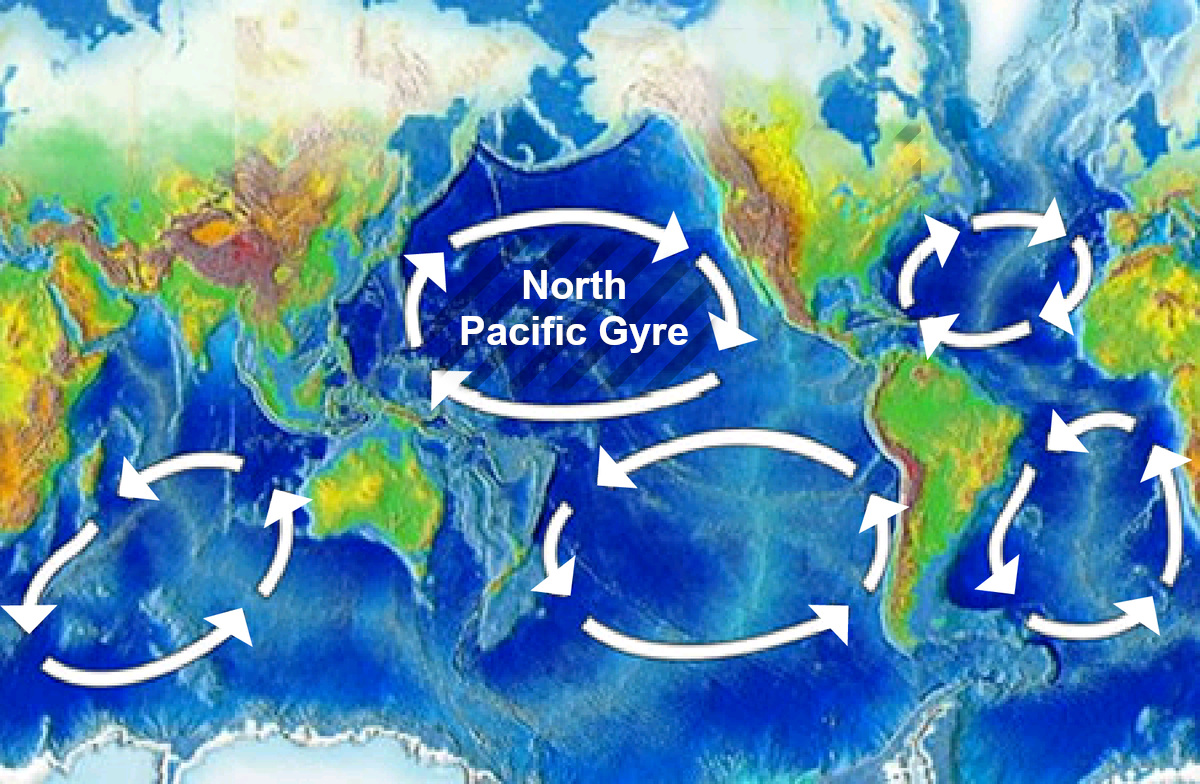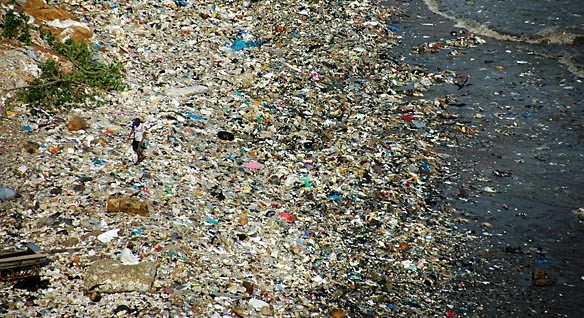-
Sylvhia.
User deleted
The Great Pacific Garbage Patch + Video

The Great Pacific Garbage Patch, also known as the Pacific Trash Vortex Great Pacific Garbage patch , is a huge accumulation of floating trash (composed mainly of plastic) located in the Pacific Ocean , approximately between 135º and 155º meridian and between the 35th and the 42nd parallel north.
Its extension is not precisely known: estimates range from 700,000 square kilometers to more than 10 million square kilometers (ie from an area larger than the Iberian Peninsula to an area larger than United States), or between the 0.41% and 5.6% of the Pacific Ocean. Although valuations obtained independently by Algalita Marine Research Foundation and by the United States Navy esteem the total amount of plastic only in a total of 3 million tons, it may contain in up to 100 million tons of debris .
The heap has been formed since the fifties, due to the action of the ocean current called the North Pacific Subtropical Gyre, equipped with a special spiral movement clockwise, the center of the vortex is a relatively stationary region of the Pacific Ocean (we often refer to this area as the latitude of the horses), which allows floating garbage to join each other to form a huge "cloud" of this garbage in the first ocean surface.Discovery

The existence of the Great Pacific Garbage Patch was laid out in a document published in 1988 by the National Oceanic and Atmospheric Administration (NOAA) of the United States. The predictions were based on results obtained by different researchers based in Alaska, which, between 1985 and 1988, measured combinations of plastics in the North Pacific Ocean.
These surveys found high concentrations of marine debris accumulating in regions dominated by marine currents. Based on research carried out in the Sea of Japan, the researchers hypothesized that similar conditions may occur in other portions of the Pacific Ocean, where the prevailing currents propitiated the development of water masses relatively stable. The researchers specifically pointed to the convergence zone of the subtropical North Pacific Vortex.
A similar patch of debris is also present in the Atlantic Ocean.
On September 2009, the weight of such a vortex reached 3.5 million tons.
The floating waste of biological origin are spontaneously undergo biodegradation, and in this oceanic area thena huge amount of non-biodegradable materials such as plastic and marine debris are accumulating . Instead biodegrade, plastic is photodegradable, disintegrating into smaller and smaller pieces until the size of the polymers that compose it, whose further biodegradation is very difficult. The plastic photodegradation plastic can produce pollution by PCBs. (PCBs, polychlorinated biphenyls, are considered persistent organic pollutants by toxicity in some cases approaching that of dioxin.)
The flotation of such particles, which have a hydrostatic behavior similar to that of plankton, induces ingestion by animals eating plankton, causing the introduction of these particles into the food chain. In some seawater samples taken in 2001 the ratio of the amount of plastic and that the zooplankton, animal life dominant in that area, was more than six to one.
Research carried out by the Woods Hole Oceanographic Institution have revealed that the system is a new ecological niche, informally called "platisphere" where the plastic is colonized by approximately one thousand different types of organisms, heterotrophic, autotrophic, predators and symbionts, including diatoms, bacteria , some of which are apparently able to degrade plastics and hydrocarbons, there are also found potentially pathogenic agents, such as bacteria of the genus vibrio; the plastic, due to its hydrophobic surface has a greater resistance to degradation and is suitable to be covered by the biofilm of microbial colonies.Effect of the Japanese tsunami of 2011
 Credits : www.tiziano.caviglia.name
Credits : www.tiziano.caviglia.name
The Tsunami that hit the east coast of Japan on March,11, 2011 resulted in a huge influx of debris in the ocean, these, floating driven by the currents were distributed in the Pacific Ocean, even reaching the American coast. A study conducted in July 2012 revealed that of the floating debris have accumulated in the Pacific Trash Vortex enhancing it up to a width of 2,000 miles, of which only 2% is made up of plastic.The Majestic Plastic Bag - A Mockumentaryby HealtheBay*Attention please* - - "This translation (and / or content) is made by Sylvhia exclusively for "I Nove Mondi Forum". In case of partial or full release is mandatory to link to the original source and the required credits".
http://it.wikipedia.org/wiki/Isola_di_plastica_del_Pacifico.
The Great Pacific Garbage Patch + Video07 Settembre 2014 |


